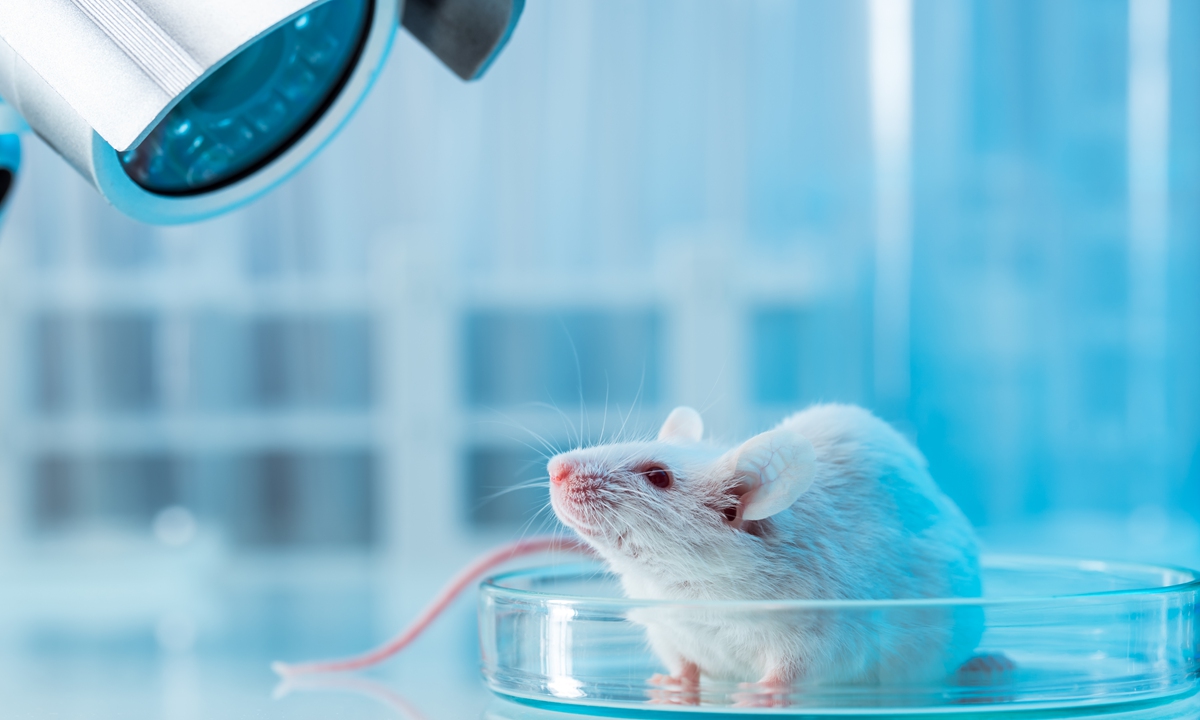‘Milestone’ anti-aging treatment restores sight in mice
Scientists said on Wednesday they have restored sight in mice using a "milestone" treatment that returns cells to a more youthful state and could one day help treat glaucoma and other age-related diseases.

The process offers the tantalizing possibility of effectively turning back time at the cellular level, helping cells recover the ability to heal damage caused by injury, disease and age.
"I'm excited about being able to rejuvenate organs and tissues that fail due to aging and disease, especially where there are no effective treatments, such as dementia," senior author of the study David Sinclair told AFP.
"We hope to treat glaucoma in human patients [at the trial stage] in two years," added Sinclair, a professor of genetics at Harvard Medical School.
The treatment is based on the properties that cells have when the body is developing as an embryo. At that time, cells can repair and regenerate themselves, but that capacity declines rapidly with age.
The scientists reasoned that if cells could be induced to return to that youthful state, they would be able to repair damage.
To turn back the clock, they modified a process usually used to create the "blank slate" cells known as induced pluripotent stem cells.
Those cells are created by injecting a cocktail of four proteins that help reprogram a cell.
The team did not want to reprogram cells all the way back to that blank-slate status, but to restore them to a more youthful condition.
So they tweaked the cocktail, using just three of the "youth-restoring" proteins - dubbed OSK - in the hope that they could turn the clock back to just the right point.
They targeted the retinal ganglion cells in the eye, which are linked to the brain through connections called axons.
These axons form the optic nerve - and damage to them caused by injury, aging or disease causes poor vision and blindness.
To test the effects of the cocktail, they first injected OSK into the eyes of mice with optic nerve injuries.
They saw a twofold increase in the number of surviving retinal ganglion cells and a fivefold increase in nerve regrowth.
"The treatment allowed the nerves to grow back towards the brain. Normally they would simply die," Sinclair said.
With signs OSK could reverse damage caused by injury, the team turned to countering the effects of disease - specifically glaucoma.

A mouse in a lab Photo: VCG
The process offers the tantalizing possibility of effectively turning back time at the cellular level, helping cells recover the ability to heal damage caused by injury, disease and age.
"I'm excited about being able to rejuvenate organs and tissues that fail due to aging and disease, especially where there are no effective treatments, such as dementia," senior author of the study David Sinclair told AFP.
"We hope to treat glaucoma in human patients [at the trial stage] in two years," added Sinclair, a professor of genetics at Harvard Medical School.
The treatment is based on the properties that cells have when the body is developing as an embryo. At that time, cells can repair and regenerate themselves, but that capacity declines rapidly with age.
The scientists reasoned that if cells could be induced to return to that youthful state, they would be able to repair damage.
To turn back the clock, they modified a process usually used to create the "blank slate" cells known as induced pluripotent stem cells.
Those cells are created by injecting a cocktail of four proteins that help reprogram a cell.
The team did not want to reprogram cells all the way back to that blank-slate status, but to restore them to a more youthful condition.
So they tweaked the cocktail, using just three of the "youth-restoring" proteins - dubbed OSK - in the hope that they could turn the clock back to just the right point.
They targeted the retinal ganglion cells in the eye, which are linked to the brain through connections called axons.
These axons form the optic nerve - and damage to them caused by injury, aging or disease causes poor vision and blindness.
To test the effects of the cocktail, they first injected OSK into the eyes of mice with optic nerve injuries.
They saw a twofold increase in the number of surviving retinal ganglion cells and a fivefold increase in nerve regrowth.
"The treatment allowed the nerves to grow back towards the brain. Normally they would simply die," Sinclair said.
With signs OSK could reverse damage caused by injury, the team turned to countering the effects of disease - specifically glaucoma.
